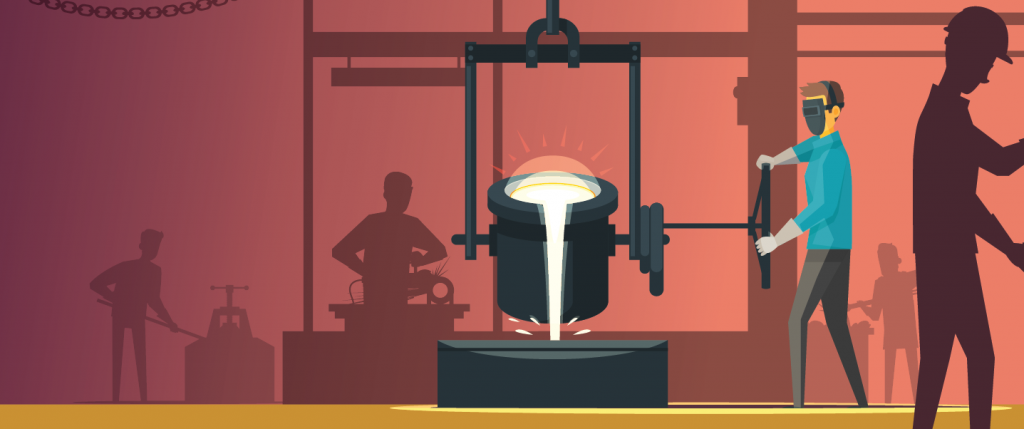Insights
PLI scheme for the steel sector: A shot in the arm
September 2, 2021India Inc. is increasingly recognised as one of the largest steel producers in the world, with production numbers of 102 million tonnes in FY21. However, there is a sea wide gap between the production of steel and value-added steel i.e. speciality steel in India.

Speciality steel is the backbone of the country, due to various strategic applications like defence, space, power, etc. and therefore, there is a reliance on imports leading to heavy forex outflow. With the objective of becoming “Atmanirbhar” and in order to lower down the forex outflow on account of a higher average price per tonne for speciality steel, the government has been spearheading a range of efforts in the sector. One such measure has been the introduction of direct fiscal incentives in the form of production linked incentives (‘PLI’) to boost manufacturing of speciality steel in India.
Read More+
PLI scheme
The scheme is a fund based scheme with a budget outlay of ₹6,322 crore. Said PLI scheme has been introduced with a multi-fold objective of encouraging domestic manufacturing, reducing India’s dependency on imports, and of promoting exports from India for speciality steel. It is expected that due to the implementation of the PLI scheme along with other measures taken by the government, production of speciality steel will increase by 140 per cent by FY27, over the baseline period of FY20, along with reduced import dependence to the tune of 76 per cent and increase in exports by 244 per cent. Furthermore, the increase in domestic manufacturing would also result in increased employment opportunities and the overall development of associated infrastructural facilities for the steel sector in India.
It is an indication to the fact that policymakers recognise that if India is to compete with Korea and Japan in the domain of speciality steel manufacturing, then the PLI scheme and other policy measures must be implemented in their most unadulterated form at the ground level.
Level playing field
The scheme is promising for the entire industry, since its intent is to extend a level playing field to both the integrated steel manufacturing companies and downstream steel manufacturers, including those in the MSME category. Additionally, the fact that the scheme caps benefits per player to about ₹200 crore will ensure a wider coverage.
The proposed benefit ranges between 4-15 per cent for a period of 5 year depending on the current production layout of speciality steel products in India, i.e., a higher incentive would be awarded for those speciality grades which are currently either not produced in India or are produced in small quantities resulting in relatively large imports.
The scheme will be made applicable for companies investing in the following broad categories of products, namely coated/plated steel products, high strength/wear resistant steel, speciality rails, alloy steel products, and steel wires and electrical steel. While the Ministry of Steel has already issued an illustrative list of product sub-categories under the above mentioned five broad categories of speciality steel, the messaging from the Ministry till now is that this list is subject to change – giving interested industry players an opportunity to approach the government to seek a coverage or an increase in incentive percentage.
This is an interesting opportunity for the players, since for certain product categories/ sub-categories, such as High Strength / Wear Resistant Steel, the minimum investment threshold has been kept as high as ₹1,000 crore to ₹2,750 crore. Thus, industry players eyeing benefits under this product category have a window of opportunity to adequately represent to the government to reduce the said investment thresholds. This will also be true for sub-categories were the minimum year on year growth is proposed to be in the range of 25 per cent to 30 per cent.
Other incentives
Further, in a welcome move, applicants have been given the flexibility to avail other Central and State incentives alongside the PLI scheme for their investments. As such, the companies making investments in India in the speciality steel segment should also be mindful to leverage other incentives available to them, especially from the point of view of optimization of their return on investment. Now, while Chapter 72 (Iron and Steel) and 73 (Articles of Iron and Steel) have been kept outside the purview of the recently notified rates for Remission of Duty and Taxes on Exported Products (‘RoDTEP’) Scheme, a plethora of other State and Central incentives offered by the government project import scheme, state incentive policies, etc., if strategically leveraged can help companies claw-back a significant portion of their investments made in India.
Lastly, while the date by when the detailed guidelines will be rolled out has not been officially notified by the government, the same is expected to be released soon. As such, for companies intending to avail benefits under said scheme, it is recommended to be well prepared in advance before the government officially opens up the PLI application portal, considering that only select companies will be awarded incentives under the scheme.
This article was originally published in The Hindu Business Line on 02 September 2021 Co-written by: Rajat Bose, Partner; Ankita Bhasin, Counsel. Click here for original article
Read Less-
Contributed by: Rajat Bose, Partner; Ankita Bhasin, Counsel
Disclaimer
This is intended for general information purposes only. The views and opinions expressed in this article are those of the author/authors and does not necessarily reflect the views of the firm.


